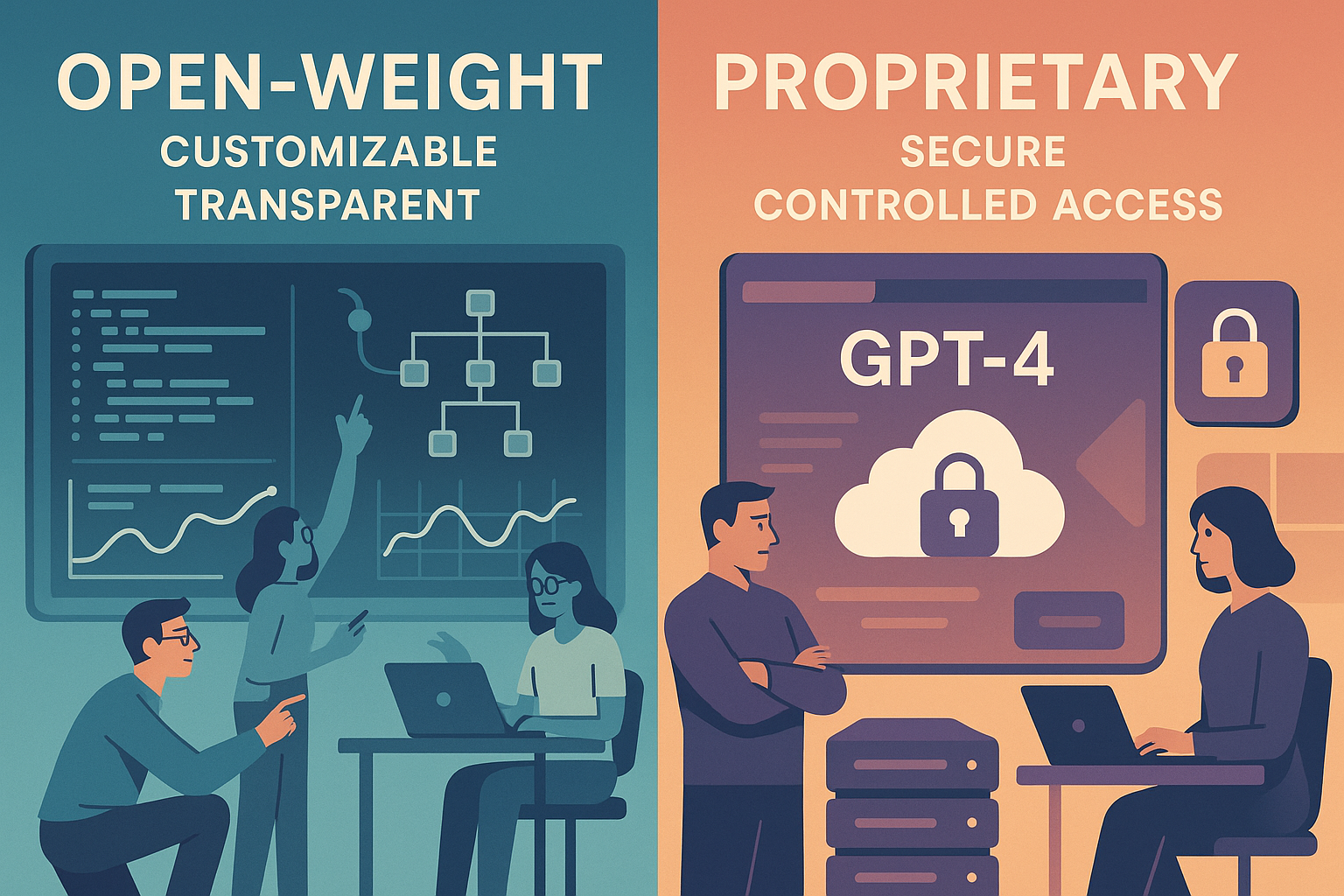Physical Address
304 North Cardinal St.
Dorchester Center, MA 02124
Physical Address
304 North Cardinal St.
Dorchester Center, MA 02124

As artificial intelligence becomes deeply embedded in business operations and consumer technologies, a pivotal debate is taking shape: Open-weight models versus proprietary AI systems. This divergence reflects two fundamentally different approaches to building and deploying AI—and signals a broader shift toward customizable, transparent, and democratized solutions.
Open-weight models are AI systems whose architecture and pre-trained weights (parameters) are publicly available. This transparency allows developers, researchers, and companies to modify, fine-tune, or deploy the models as they see fit.
Projects like Meta’s LLaMA, Mistral, and Falcon have embraced this approach, providing access to high-performance models that can be tailored for domain-specific tasks—without being locked into a vendor’s ecosystem.
In contrast, proprietary AI models—such as OpenAI’s GPT-4, Google’s Gemini, and Anthropic’s Claude—are closed systems. Users can interact with these models through APIs or platforms, but the underlying architecture, training data, and weights remain inaccessible.
These models often offer strong performance, robust guardrails, and optimized infrastructure. However, they limit transparency, customization, and data control, which can be problematic for industries that prioritize confidentiality and compliance.
The growing adoption of open-weight models is driven by several compelling factors:
Despite their flexibility, open-weight models pose challenges:
The real future may lie in a hybrid approach. Enterprises might use open-weight models for sensitive or niche applications while leveraging proprietary AI for general use cases with stronger safety nets.
This coexistence allows businesses to balance innovation with reliability, openness with control, and cost with performance.
The shift toward open-weight AI isn’t just a technical trend—it reflects a larger movement toward agency, sovereignty, and personalization in how we build and use intelligent systems. As the tools for customization become more accessible, expect open-weight models to play a transformative role in shaping the next generation of AI applications.